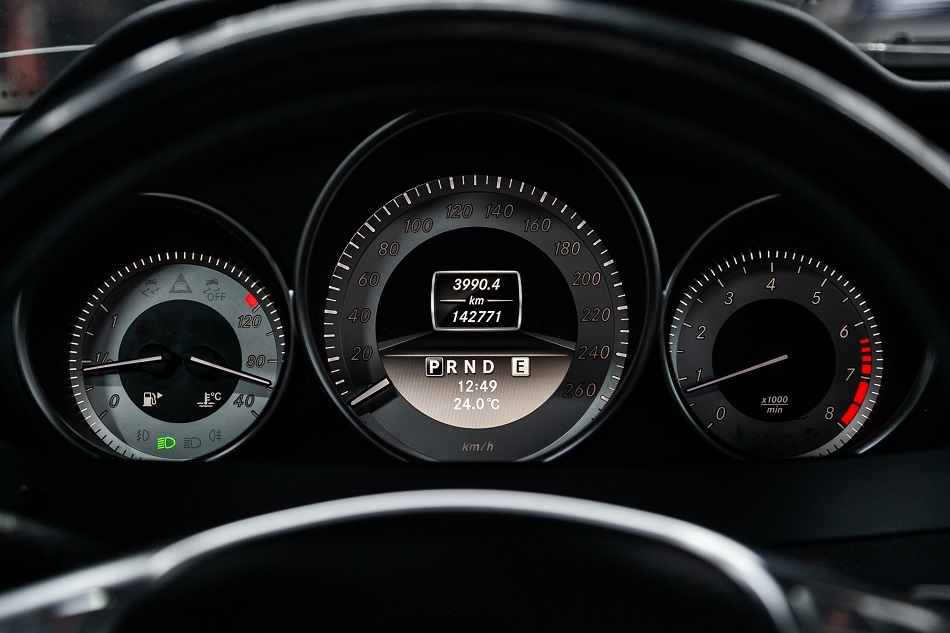By Kalwinder KaurMar 6 2013

Image Credit: EveryonePhotoStudio/Shutterstock.com
The air-fuel meter - also known as the air-fuel gauge, air-fuel ratio meter or air-fuel ratio gauge - is used for monitoring the air-fuel ratio of an internal combustion engine.
It displays the voltage output of an oxygen sensor that includes a narrow band or a wideband oxygen sensor. Most of the stand-alone, narrow-band meters feature 10 LEDs and analog needle style gauges. Narrowband sensors have a non-linear output and are dependent on temperature, and they switch between lean area and rich area thresholds.
The influence of temperature on voltage is smaller in the lean mode when compared to the rich mode. Conversely, the wide-band sensors have a very linear output ranging from 0 to 5 V and are independent of temperature.
The operation of the air-fuel ratio sensor is clearly demonstrated in the following training schedule:
AFR, Wide Range or Air Fuel Ratio Sensor
Research
In 2009 Yong C designed a high pressure, combined air-fuel injection system at the Vanderbilt University and tested on an experimental, free liquid-piston engine compressor. The system mixes high pressure air from the reservoir of the compressor and high pressure fuel and injects the mixture into a combustion chamber. It consists of an electronically controlled air/fuel ratio control system, a fuel line and an air line with mass flow rates restricted by metering valves.
These two lines are connected to a downstream tube where fuel and air are mixed. The simulation and experimental data show that the desired air-fuel ratios can be achieved by controlling the orifice areas and upstream pressures of the metering valves. The proposed system provides a compact and effective air/fuel injection and control for small scale engines. Large-scale engines may require air and fuel valves with larger orifice areas and faster response times.
Precise control of a spark-ignition internal combustion engine requires an accurate measurement of the air-fuel ratio. However, it is difficult to achieve accurate measurement economically owing to the lack of availability of inexpensive sensors. Researchers at the University of Brighton proposed an approach that uses the spark plug as a sensor for measuring the air-fuel ratio.
The researchers measured the time of varying voltage waveforms in the spark plug. The waveform shape is usually dependent on the combustion activity in the cylinder, which is in turn influenced by the air-fuel ratio. The data was then analyzed using a neural network after carrying out a signal-enhancement process using pre-processing algorithms.
The output of the analysis was used to predict the air-fuel ratio. The team also described the effects of the varying training file sizes of the neural network and measures to overcome the effects of variations in other engine parameters.
Calibration
It is important to calibrate the output of this device between 0 and 5 volts to allow for the translation into the air-fuel ratio. In terms of figures, a 0 volt is equivalent to an air-fuel ratio of 10:1 (fuel rich) and 5 volts with amounts to an air-fuel ratio of 20:1 (fuel lean).
Benefits
Discrepancies in the output of an oxygen sensor can often give off inaccurate readings on fuel consumption and this can affect the emission of pollutants and lower power throttle feedback. One benefit of using an air-fuel meter is that it supports the catalytic converter to function at optimum efficiency.
Additional benefits to using an air-fuel meter include:
- Optimum fuel mileage
- Economically efficient based on the engine costing less per mile traveled
- Reduction in CO2 emissions
- Maximum engine performance and a reduction in the risk of detonation.
Sources and Further References
This article was updated on 13th February, 2020.
Disclaimer: The views expressed here are those of the author expressed in their private capacity and do not necessarily represent the views of AZoM.com Limited T/A AZoNetwork the owner and operator of this website. This disclaimer forms part of the Terms and conditions of use of this website.